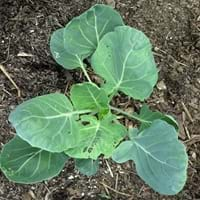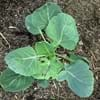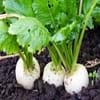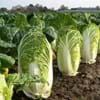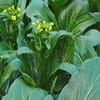Life Span
Biennial
Perennial
Origin
Southern Europe, Western Europe, Mediterranean
Mexico, Central America
Types
Wild cabbage, Cabbage, Savoy cabbage
Reinikie, Dade, Pike, Suebelle and Golden
Climate
Habitat
Fertile bottom land, Moist Soils, Well Drained
Tropical Highlands
USDA Hardiness Zone
4-8
8-11
Sunset Zone
A1, A2, A3, H1, H2, 1a, 1b, 2a, 2b, 3a, 3b, 4, 5, 6, 7, 8, 9, 10, 11, 12, 13, 14, 15, 16, 17, 18, 19, 20, 21, 22, 23, 24
H1, H2, 14, 15, 16, 17, 18, 19, 20, 21, 22, 23, 24
Habit
Upright/Erect
Oval or Rounded
Flower Color
Yellow
Light Green, Ivory
Flower Color Modifier
Bicolor
Bicolor
Fruit Color
Not Available
Light Yellow, Yellow green, Light Green
Leaf Color in Spring
Not Available
Green, Dark Green
Leaf Color in Summer
Green
Green, Dark Green
Leaf Color in Fall
Green
Green, Dark Green
Leaf Color in Winter
Green
Light Green
Leaf Shape
Broad, Unlobed
Alternate
Plant Season
Spring, Summer, Fall, Winter
Spring, Summer, Fall, Winter
Sunlight
Full Sun, Partial Sun
Full Sun
Type of Soil
Loam, Sand
Loam, Sand
The pH of Soil
Neutral
Acidic, Neutral
Soil Drainage
Well drained
Well drained
Bloom Time
Late Spring, Early Summer, Summer
Winter, Late Winter
Tolerances
Drought
Drought
Where to Plant?
Container, Ground
Ground
How to Plant?
Seedlings, Transplanting
Budding, Grafting, Seedlings, Vegetative
Plant Maintenance
Medium
Medium
Watering Requirements
Average Water Needs, Keep ground moist, Needs a lot of water initially, Needs watering once a week, Never Over-water
Do not water frequently, Needs more water during establishment, Water during dry weather
In Summer
Lots of watering
Lots of watering
In Spring
Moderate
Moderate
In Winter
Average Water
Average Water
Soil pH
Neutral
Acidic, Neutral
Soil Type
Loam, Sand
Loam, Sand
Soil Drainage Capacity
Well drained
Well drained
Sun Exposure
Full Sun, Partial Sun
Full Sun
Pruning
Prune lower leaves, Remove damaged leaves, Remove dead branches, Remove dead leaves
Remove damaged leaves, Remove dead branches, Remove dead leaves
Fertilizers
5-10-10 fertilizer, All-Purpose Liquid Fertilizer, Apply 10-10-10 amount
All-Purpose Liquid Fertilizer
Pests and Diseases
Red blotch
Red blotch
Plant Tolerance
Drought
Drought
Flower Petal Number
Single
Single
Fragrant Flower
No
Not Available
Fragrant Bark/Stem
Yes
No
Foliage Texture
Bold
Medium
Foliage Sheen
Matte
Matte
Allergy
allergic reaction, breathing problems, Dizziness, Headache, Itchiness, Low blood pressure, Runny nose, Skin rash, Stomach pain, Swelling
drowsiness
Aesthetic Uses
Not Used For Aesthetic Purpose
Not Used For Aesthetic Purpose
Beauty Benefits
Good for skin
Not Available
Environmental Uses
Air purification
Air purification
Medicinal Uses
anti-inflammatory, Anti-oxidant, Cardiovascular problems, cholesterol-lowering, Detoxification, Fiber, Minerals, Nutrients, Vitamin C
Anti-carcinogenic effects, Colon Cancer
Part of Plant Used
Fruits
Fruits, Pulp, Seeds
Other Uses
Not Available
Used As Food
Used As Indoor Plant
Insignificant
No
Used As Outdoor Plant
Yes
Yes
Garden Design
Edible, Herb / Vegetable
Edible, Fruit / Fruit Tree, Shade Trees, Tropical
Botanical Name
BRASSICA oleracea 'Diablo'( Gemmifera Group)
CASIMIROA edulis
Common Name
Brussels Sprouts
White Sapote
In Hindi
Brussels Sprouts plant
White Sapote
In German
Rosenkohl Pflanze
White Sapote
In French
Choux de Bruxelles plante
Sapote blanche
In Spanish
planta de coles de Bruselas
White Sapote
In Greek
φυτό Λαχανάκια Βρυξελλών
White Sapote
In Portuguese
Couves de Bruxelas planta
White Sapote
In Polish
Brukselka roślin
White Sapote
In Latin
Bruxellis pullulat herba
White Sapote
Phylum
Magnoliophyta
Magnoliophyta
Class
Magnoliopsida
Magnoliopsida
Order
Capparales
Sapindales
Family
Brassicaceae
Rutaceae
Clade
Angiosperms, Eudicots, Rosids
Angiosperms, Eudicots, Rosids
Tribe
Not Available
Not Available
Subfamily
Not Available
Not Applicable
Number of Species
Not Available
Properties of Brussels Sprouts and White Sapote
Wondering what are the properties of Brussels Sprouts and White Sapote? We provide you with everything About Brussels Sprouts and White Sapote. Brussels Sprouts doesn't have thorns and White Sapote doesn't have thorns. Also Brussels Sprouts does not have fragrant flowers. Brussels Sprouts has allergic reactions like allergic reaction, breathing problems, Dizziness, Headache, Itchiness, Low blood pressure, Runny nose, Skin rash, Stomach pain and Swelling and White Sapote has allergic reactions like allergic reaction, breathing problems, Dizziness, Headache, Itchiness, Low blood pressure, Runny nose, Skin rash, Stomach pain and Swelling. Compare all the properties and characteristics of these two plants. Find out which of these plant can be used as indoor plant. If you are interested to decorate your house and garden, find out aesthetic uses, compare them and select the plant which will beautify your surrounding. Along with beautification, try comparing medicinal and edible uses of Brussels Sprouts and White Sapote and you can choose the plant having best and most benefits.
Season and Care of Brussels Sprouts and White Sapote
Season and care of Brussels Sprouts and White Sapote is important to know. While considering everything about Brussels Sprouts and White Sapote Care, growing season is an essential factor. Brussels Sprouts season is Spring, Summer, Fall and Winter and White Sapote season is Spring, Summer, Fall and Winter. The type of soil for Brussels Sprouts is Loam, Sand and for White Sapote is Loam, Sand while the PH of soil for Brussels Sprouts is Neutral and for White Sapote is Acidic, Neutral.
Brussels Sprouts and White Sapote Physical Information
Brussels Sprouts and White Sapote physical information is very important for comparison. Brussels Sprouts height is 121.92 cm and width 60.96 cm whereas White Sapote height is 610.00 cm and width 760.00 cm. The color specification of Brussels Sprouts and White Sapote are as follows:
Brussels Sprouts flower color: Yellow
Brussels Sprouts leaf color: Not Available
White Sapote flower color: Light Green and Ivory
- White Sapote leaf color: Green and Dark Green
Care of Brussels Sprouts and White Sapote
Care of Brussels Sprouts and White Sapote include pruning, fertilizers, watering etc. Brussels Sprouts pruning is done Prune lower leaves, Remove damaged leaves, Remove dead branches and Remove dead leaves and White Sapote pruning is done Remove damaged leaves, Remove dead branches and Remove dead leaves. In summer Brussels Sprouts needs Lots of watering and in winter, it needs Average Water. Whereas, in summer White Sapote needs Lots of watering and in winter, it needs Average Water.
